Jinshanling the Great Wall
Jinshanling Great Wall is located in Luanping County, Chengde City, Hebei Province. It is adjacent to Miyun District, Beijing, 130 kilometers away from Beijing. Qi Jiguang, a patriotic general of the Ming Dynasty, presided over the construction of the Great Wall during the period of serving as Chizhen General Officer (1567-1586). It is the quintessence of the Great Wall. It is known as the "Great Wall of Wanli, the unique beauty of Jinshan".
Barrier wall, text brick and horse stone are the three masterpieces of the Great Wall of Jinshan Mountains. They are known as "the paradise of photographers". The Great Wall of Jinshan Mountains is a national key cultural relic protection unit, national scenic spot and national 4A level tourist attraction, and has been listed in the World Cultural Heritage List. On November 15, 1992, Ke Shouliang, an Asian "flying man", successfully flew over the Great Wall of Jinshan Mountains by motorcycle.
Location context
The Great Wall of Jinshan Mountains lies on the Yanshan Branch at the junction of Luanping County, Chengde City, Hebei Province, and Miyun District, Beijing. It connects Simatai Great Wall to the East and Gubeikou Great Wall to the west. It is located at the intersection of Beijing, Tianjin, Liaoning and Mongolia. Jinshanling Great Wall is located at 133 kilometers of 101 National Highway, 130 kilometers away from Beijing, 90 kilometers from Chengde Summer Resort and 200 kilometers from Mulan Paddock. It is an important part of Beijing North Gold Tourism Line.
Ten thousand li alone
The Great Wall of Jinshan Mountains was built in the first year of Hongwu in Ming Dynasty (1368 A.D.) and was presided over by General Xu Da. In the first year of Longqing (1567 A.D.), Qi Jiguang, the general officer of Jizhen, a famous anti-Japanese general, and Tan Lun, governor of Jiliao, rebuilt and rebuilt the Great Wall built by Xuda.
Jinshan mountain the Great Wall
From the west to the historic Gubeikou Pass, the Wangjing Tower rises to the clouds in the east. It is 10.5 kilometers long. There are five passes along the route, 67 enemy buildings and 3 beacons. It is famous for its wide vision, dense enemy buildings, peculiar scenery, exquisite architecture, sound military defense system and well-preserved.
Jinshan Mountains, 700 meters above sea level, climb mountains in the north, look at Simatai Reservoir in the East and Miyun Reservoir in the south. The Great Wall relies on mountains and dangers, fluctuates between mountains and rivers, and the situation is extremely magnificent. Especially here, the enemy buildings are dense, the construction is exquisite, the form is diverse, is the Badaling, Shanhaiguan, Jiayuguan and other places, the Great Wall is one of the tourist attractions being developed in the Great Wall. The Great Wall of Jinshan Mountains is winding and winding, with a wide view, dense enemy buildings and magnificent spectacle. The Great Wall is surrounded by high mountains and vast forests. It is suitable for hiking and photography in spring, summer, autumn and winter.
As an integral part of the Great Wall, the Great Wall of Jinshan Mountains was listed as a World Cultural Heritage Site in 1987 and as the third batch of national key cultural relics protection units in 1988. The Great Wall of Jinshan Mountains is also a national scenic spot and a national 4A-level tourist attraction. "Jinshanling - Simatai Great Wall" was named the seventh of the top ten autumn colors in China by the 11th issue of National Geography of China in 2010. The article says: The Great Wall is the most luxurious mountain line in the world, the most beautiful viewing platform, and the most profound historical ruins. There are too many angles to see the beauty of the Great Wall. It's too beautiful to say how many words it contains.
The Jinshanling Great Wall is the best preserved section of the Great Wall of the Ming Dynasty, which is called the essence of the Great Wall by experts. The City fluctuates like steel walls and iron walls. There are many carved buildings, such as armoured guards, which are famous for their wide vision, dense enemy buildings and peculiar function of building defense system.
The Great Wall here is a complex structure, densely covered with enemy buildings, generally 50-100 meters a wall based on megalithic rocks, 5-8 meters high, various forms, with unique features. There are brick and wood structure, there are also brick and stone structure, there are single-layer, there are double-layer, there are flat roof, but also dome, boat roof, four-angle drilling ceiling and octagonal algae well top, can be described as the first floor type, known as the "Great Wall, Jinshan unique show".
The Great Wall of Jinshan Mountains has a very strong military defense system. It has barrier walls, stacking walls, battlefields, fortresses, watchtowers, thunder holes, perforations, horse-retaining walls, supporting walls, fencing walls and so on. It can be said that layers of defense are solid as gold. When you climb the Great Wall of Jinshan Mountains and feel the magnificence and magnificence of the ancient Great Wall, you will realize the greatness and heroism of a nation.
The Great Wall of Jinshan Mountains is winding and winding according to the mountain trend, with its height and height looming and momentum magnificent. Because of its low terrain, easy to attack and difficult to defend, the city walls are very thick and solid, the beacon towers are lofty and tall, and the fortresses of the city gates are scattered all over the place, with a total of 158 floors. These balconies have different forms, such as square, flat, circular piers, roofs with canopy, dome, quadrangle and octagon drilling skyscrapers and other shapes, in addition, there are not porous eye observation platform, as well as rare storehouses along the Great Wall. Inside and outside the Great Wall of Jinshan Mountains, there are beacon towers and camps such as Simatai Fort, Longyuyu Fort and Five Battalions of Refining Army. The outline of the capital city can be seen from the Wangjing Tower on the top of Jinshan Mountain.
Spring here is full of flowers and fragrant fragrance; spring is full of trees and onions in midsummer, clouds and mists are vague; autumn is full of mountains and forests, and winter is full of white snow. In this picturesque world, there are beautiful scenery and wonders everywhere, which is really amazing.
This section of the Great Wall has complete military facilities and solid construction. From Jinshanling to Simatai, it is the most well-preserved section of Beijing.
Archaeological data
Geologically, it belongs to the transitional zone between Yanshan fold and Inner Mongolia anticline. Two hundred million years ago, it was a vast ocean. Huge crustal movement and millions of years of knife carving and shaping have created a variety of spectacular scenery. With its artificially constructed Great Wall, Jinshan Mountain becomes more magnificent and pleasant.
According to the textual research of cultural relics experts, as early as the Northern Qi Dynasty, the Great Wall was built and blocked in this area. Remains are still there. But at that time, the Great Wall was low and thin, mostly built of earth and stone. It was in the Ming Dynasty that the Great Wall was really built on a large scale and with high standards. In 1368, Zhu Yuanzhang overthrew the Yuan Dynasty and established the Ming Dynasty. He immediately sent General Xu Da and others to build the city gates at Juyongguan, Gubeikou and Xifengkou, and sent heavy troops to garrison them. After Zhu Di became emperor, he moved the capital of the Ming Dynasty from Nanjing to Beijing in 1421. Beijing's defense was more important. Therefore, large-scale construction of the Great Wall, especially from Juyongguan to Shanhaiguan on the north side of the capital Beijing, has made the Great Wall more than 1,000 miles tall and strong. But the Great Wall of this period was built with stones. After 1522, the power of the Ming Dynasty changed from strong to declining. The northern Mongolian Tatars and Duoyan invaded the south many times, which posed a serious threat to the rulers of the Ming Dynasty. In order to strengthen the defense of the north, in the first year of Longqing (1567), when Zhu Zaiyi of Muzong of Ming Dynasty took office, Gao Gong and Zhang Juzheng, the politicians, were reused to take charge of the dynasty, and Tan Lun and Qi Jiguang, the famous anti-Japanese generals, were specially transferred from the south to the north. Tan Lun was appointed governor of Ji, Liao and Bao, and Qi Jiguang was appointed governor of Jizhen. After Qi Jiguang came to power, he first visited the Great Wall. He found that the original Great Wall was low and thin, and many places had declined, and could not play its role in defending the enemy. Therefore, Qi Jiguang asked the court to agree that, with the strong support of Tan Lun, governor of Ji, Liao and Bao, the original Great Wall, which was more than 1,200 miles long under Jizhen's jurisdiction, was generally rebuilt and rebuilt. On the other hand, more than 1300 tall and strong enemy buildings were built along the whole line as fortresses for border guards. During Qi Jiguang's 16 years in office, this huge military project was successfully completed, thus greatly improving the defensive capacity of the Great Wall.
In the decades after Qi Jiguang presided over the construction of the Great Wall, the Ming Dynasty continued to raise financial, material and military resources to repair it, making it a solid defense line with high walls and fortresses. The Great Wall of Jinshan Mountains is one of them. Its majestic momentum, dense enemy buildings and exquisite construction art can be called the essence of the Great Wall of China. Upon the Great Wall of Jinshan Mountains, you can enjoy the varied scenery of North China. The winding Great Wall, like a dragon with its head high and tail high, soars on the top of the rolling mountains. The head of the Dragon rises high in the east to the top of Tiger Mountain, as if it could leap to the Palace of Heaven with one more leg, while the tail of the dragon carries the Bank of the silver belt in the west. The Jingtong Railway and Jingcheng Highway, like two long snakes, climb under the Dragon body.
The first peak of the Yanshan Mountains in the east, Wuling Mountain, stands faintly between the heavy mountains; the Wohuling Mountains in the west, like a giant tiger, guarding Beijing's northern gate, Gubeikou, and the Miyun Reservoir in the south, like a mirror embedded between the steep mountains; and the northern mountain. The sea of clouds, such as gale and surge, rolls to the sky. In addition, the blue sky and white clouds set off a magnificent landscape of North China.
The Great Wall of Jinshan Mountains changes its scenery for visitors throughout the year. When spring comes to Jinshan Mountain, the mountains are covered with tender green, peach blossoms, apricot blossoms, Yingshan red, Shandandandan, and all kinds of unknown wild flowers, cluster by cluster, blooming in a race, exuding a rich fragrance; when summer comes, lush trees, rippling mountain streams, colorful rainbows and rainbows in the rainy sky, let's go. The Great Wall of Jinshan Mountains is beautifully dressed; in the golden autumn season, both inside and outside the Great Wall, the mountains are red, the forests are dyed, and all kinds of wild fruits are hanging on the branches; after the severe winter and snow, it becomes a silver world. The winding and undulating Great Wall is like a jade belt falling in the mountains, rising and falling, left and right, and appearing. Under the sunshine, the enemy buildings are like a pearl embedded in the jade belt.
In accordance with Qi Jiguang's principle of "stoppage by danger due to topography", the Great Wall of Jinshan Mountains is built along with the ups and downs of the mountain. It is uneven and uneven, and the captain is magnificent. Where the mountain is steep, the wall is lower; wherever the mountain is gentle, the wall is higher. The walls are wide, narrow and firm. The bottom is laid with three or four layers of strips of stone, the upper is covered with rectangular green bricks, the white lime joints, and the walls are filled with earth, sand and stone. At the lower part of the inner wall, coupon doors are located not far from each other, most of which are located near enemy buildings. There are stone ladders or brick ladders passing through the top of the wall in the coupon gate. In case of an emergency, the guards can climb the Great Wall directly from the coupon gate or enter the enemy building to fight. The Road on the top of the city wall is about 5 meters wide and narrow on average according to the need. It is paved with double-decked large square green bricks, which can accommodate 67 people in parallel. Whenever a steep slope is encountered on the road, the steps are made of bricks to facilitate the passage from top to bottom and avoid slipping. This kind of road building is rare on the Great Wall. Every two or three meters away, a brick drainage channel is set up to prevent rainwater from scouring or eroding the wall. At the outside end of the drain, a radium hole was built. The guards could throw radium stones from the radium hole to attack the enemy. On the outside side of the top of the city wall, a two-meter high stacking wall is built with bricks. The palletizing wall is stacked at intervals of more than one meter. The garrison soldier can shoot at the enemy from the mound. There is a small hole in the stack. The hole has two purposes. First, a weapon called Franc machine was introduced from abroad in the Ming Dynasty. There is a shaft under the Franc machine. The shaft is inserted in the hole and can be turned into a fan-shaped shooting. Second, it is used to insert the flag to encourage or to use the flag as a signal to convey the enemy's feelings. On the inner side of the top of the wall, a 1.7-meter-high wall is built of bricks. There are three layers of shooting holes on the wall, which can be used by soldiers to shoot enemies in three positions: standing, kneeling and lying.
The Great Wall of Jinshan Mountains changes its scenery for visitors throughout the year. When spring comes to Jinshan Mountain, the mountains are covered with tender green, peach blossoms, apricot blossoms, Yingshan red, Shandandandan, and all kinds of unknown wild flowers, cluster by cluster, blooming in a race, exuding a rich fragrance; when summer comes, lush trees, rippling mountain streams, colorful rainbows and rainbows in the rainy sky, let's go. The Great Wall of Jinshan Mountains is beautifully dressed; in the golden autumn season, both inside and outside the Great Wall, the mountains are red, the forests are dyed, and all kinds of wild fruits are hanging on the branches; after the severe winter and snow, it becomes a silver world. The winding and undulating Great Wall is like a jade belt falling in the mountains, rising and falling, left and right, and appearing. Under the sunshine, the enemy buildings are like a pearl embedded in the jade belt.
In accordance with Qi Jiguang's principle of "stoppage by danger due to topography", the Great Wall of Jinshan Mountains is built along with the ups and downs of the mountain. It is uneven and uneven, and the captain is magnificent. Where the mountain is steep, the wall is lower; wherever the mountain is gentle, the wall is higher. The walls are wide, narrow and firm. The bottom is laid with three or four layers of strips of stone, the upper is covered with rectangular green bricks, the white lime joints, and the walls are filled with earth, sand and stone. At the lower part of the inner wall, coupon doors are located not far from each other, most of which are located near enemy buildings. There are stone ladders or brick ladders passing through the top of the wall in the coupon gate. In case of an emergency, the guards can climb the Great Wall directly from the coupon gate or enter the enemy building to fight. The Road on the top of the city wall is about 5 meters wide and narrow on average according to the need. It is paved with double-decked large square green bricks, which can accommodate 67 people in parallel. Whenever a steep slope is encountered on the road, the steps are made of bricks to facilitate the passage from top to bottom and avoid slipping. This kind of road building is rare on the Great Wall. Every two or three meters away, a brick drainage channel is set up to prevent rainwater from scouring or eroding the wall. At the outside end of the drain, a radium hole was built. The guards could throw radium stones from the radium hole to attack the enemy. On the outside side of the top of the city wall, a two-meter high stacking wall is built with bricks. The palletizing wall is stacked at intervals of more than one meter. The garrison soldier can shoot at the enemy from the mound. There is a small hole in the stack. The hole has two purposes. First, a weapon called Franc machine was introduced from abroad in the Ming Dynasty. There is a shaft under the Franc machine. The shaft is inserted in the hole and can be turned into a fan-shaped shooting. Second, it is used to insert the flag to encourage or to use the flag as a signal to convey the enemy's feelings. On the inner side of the top of the wall, a 1.7-meter-high wall is built of bricks. There are three layers of shooting holes on the wall, which can be used by soldiers to shoot enemies in three positions: standing, kneeling and lying.
Practical information
Admission ticket:
Adult tickets: 65 yuan in peak season (from March 16 to November 15) and 55 yuan in off season (from November 16 to March 15).
The ropeway is 40 yuan one way, 1000 meters in length, 150 meters in height difference and 17 minutes in one way operation.
Get accommodation:
There is a quasi-two-star Jinshan Hotel in the scenic area, which can accommodate more than 200 people and eat more than 500 people at the same time.
Accessibility facilities and services:
Slopes, blind lanes, barrier-free parking spaces, low ticket outlets, barrier-free toilets, low telephone, wheelchair services.
Play items:
1. The Great Wall of Jinshan Mountains has not been repaired. A total of 24 enemy buildings have maintained their original appearance for 400 years.
2. The distance from Jinshanling Great Wall to Simatai Great Wall is nearly 10 kilometers, which takes about 4 hours. There are local guides in Jinshanling and Simatai. They can provide one-to-one service to tourists and hand in hand to protect the safety of tourists when needed. Therefore, the safety factor is high. Accompanying staff are more reassured about this. After the tour, they usually have to pay a tip to the guide (about 50 yuan), or buy a picture book from the villagers. In return.
3. Not going back is another advantage of climbing this section of the Great Wall. The farther you go to the Great Wall elsewhere, the longest way back.
Tips for friendship:
Although the Great Wall of Jinshan Mountains has been renovated, tourists are still less involved, there are not too difficult areas, it is a good place for walking on the Great Wall and a paradise for photographers. Sooner or later, the scenery is the most magnificent. Clouds and rainbows after rains in summer and autumn have become a major landscape of Jinshan Mountains. May-October is the best time to shoot.

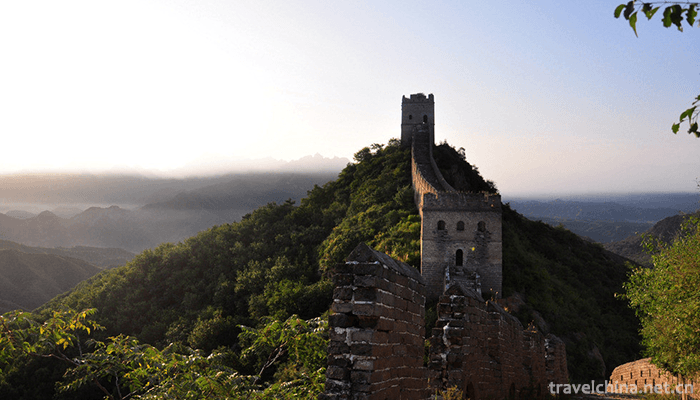
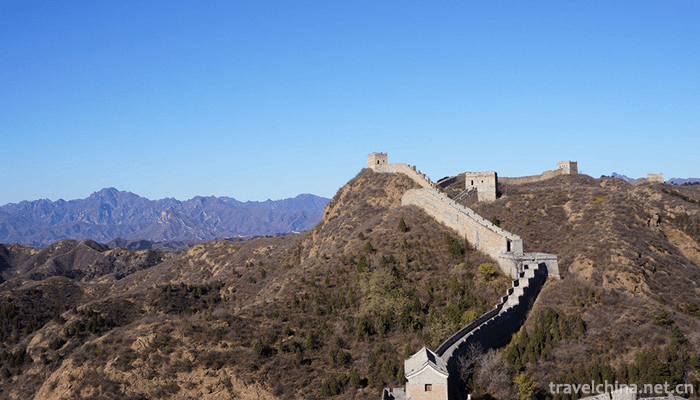
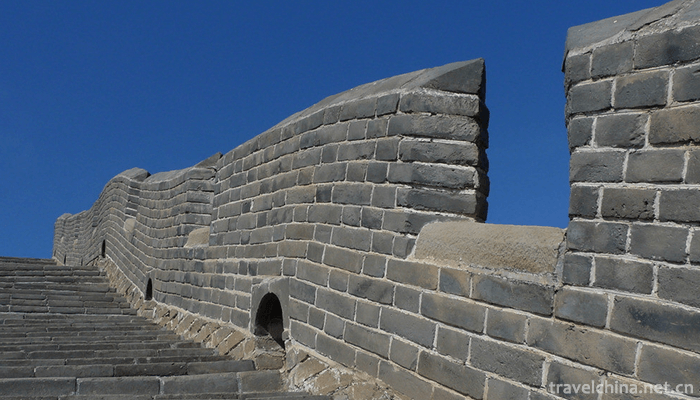
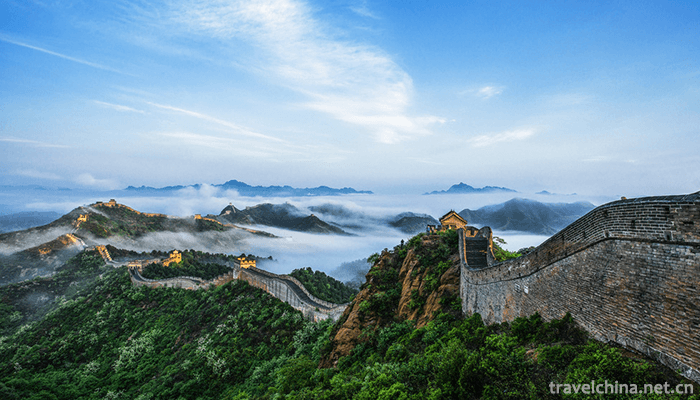
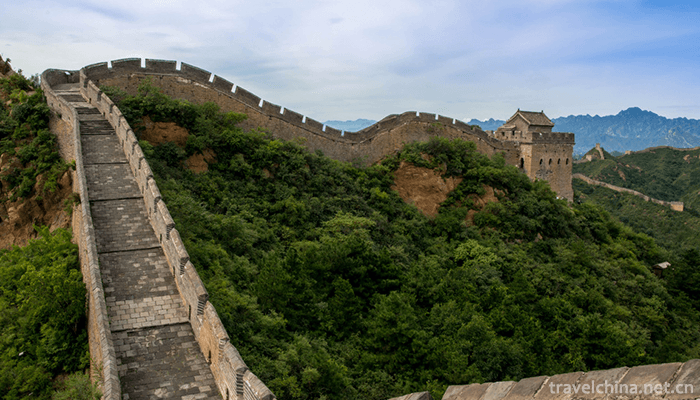
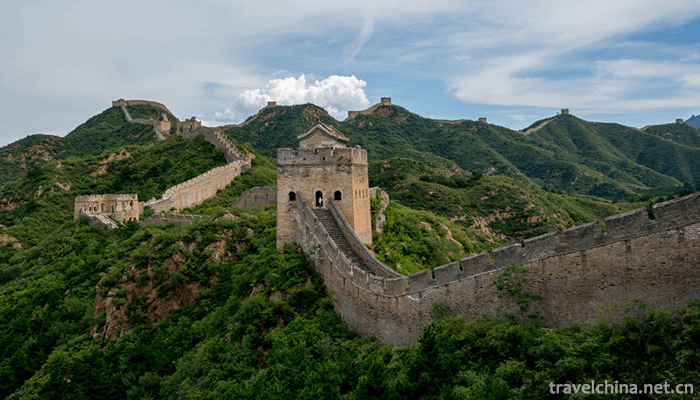
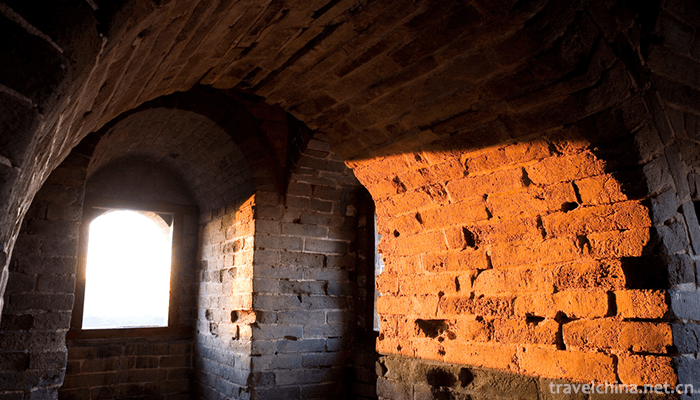
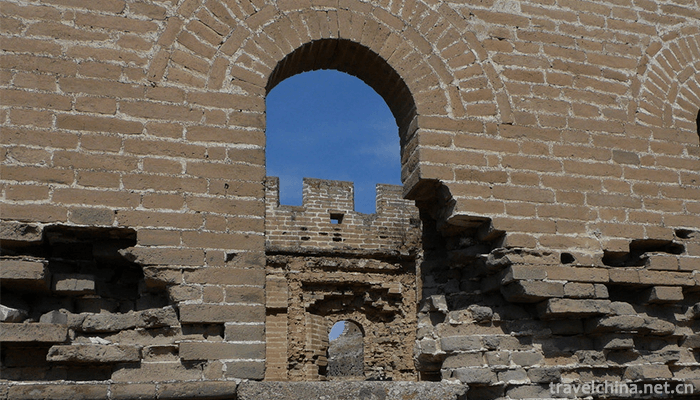

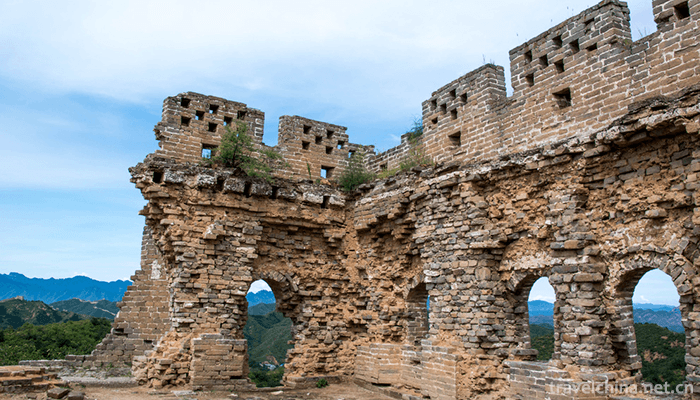
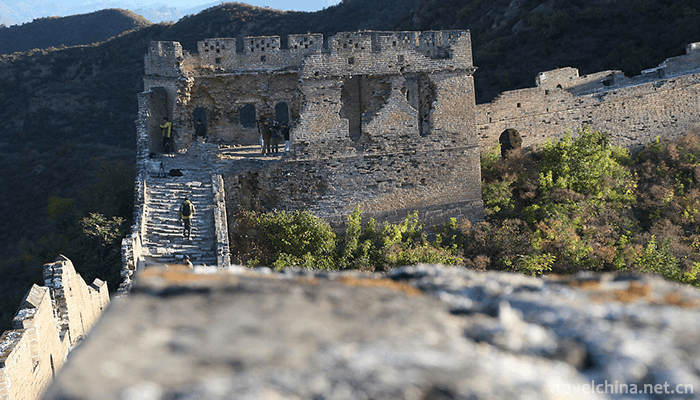
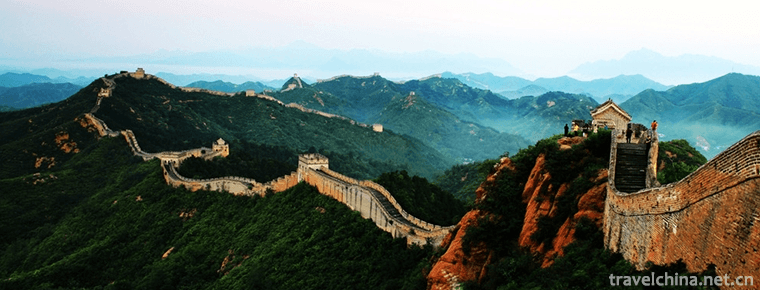
-
1.Ching Bo Leung
The word "cool" in Hainan dialect can be pronounced as "Yin Shang Sheng", which is homonymous with the two words used as weight unit. It is the soup of old fire for clearing heat a
Time 2018-11-05 -
2.qikongqigong
Qigong (qigong) is a traditional Chinese method of health care, health preservation and disease elimination. Ancient or "Dandao" is a kind of physical
Time 2018-11-13 -
3.Privacy Policy
We takes users' information safety and privacy as our lifeline. Based on our basic principle "Users' needs are our first priority", we are committed to enhancing the transparency of informat
Time 2018-12-08 -
4.Huaxia City Tourist Scenic Spot
Weihai Huaxia City Scenic Area belongs to Huaxia Cultural Tourism Group Co., Ltd. It is located in Weihai, a beautiful seaside resort city.
Time 2018-12-08 -
5.Yunnan Nationalities Village
Located in the southwest suburb of Kunming City, Yunnan Province, Yunnan Ethnic Village covers 89 hectares. It is a window reflecting and displaying the social and cultural customs
Time 2018-12-22 -
6.Yeliguan Scenic Area
Yeliguan Scenic Area is located in Lintan County, with Yeliguan of Lintan County as the center. It is divided into four scenic areas: Lianhuashan, Xixia, Dongxia and Yehai Lake.
Time 2018-12-26 -
7.Xiaolangdi Yellow River Three Gorges Scenic Area
The Three Gorges Scenic Area of the Yellow River in Xiaolangdi is a world geological park, a National Water Conservancy Scenic area, the most attractive place in China, ten hot spots in Henan Province
Time 2019-02-25 -
8.Nu Fairy Festival
Fairy Festival is a traditional folk festival of Nu people in Gongshan area of Yunnan Province. The local flower festival, also known as the Flower Festival, is held on March 15 of the lunar calendar
Time 2019-06-08 -
9.Legend of Mount Tai
Taishan legend is one of the folk legends in Shandong Province. According to legend, the history of the Theocracy of Taishan God in charge of life and death can be traced back to the pre-Qin period. A
Time 2019-06-18 -
10.Bone setting therapy of traditional Chinese medicine
Bone-setting, traditional Chinese medicine refers to the treatment of fracture, dislocation and other diseases by pushing, pulling, pressing and pressing. Orthopaedics, as a specialty name, is a speci
Time 2019-08-10 -
12.Meishan transportation
Meishan occupies an important traffic area at the South Gate of Chengdu, including Chengdu Leshan expressway, Chengdu Ya'an expressway, Chengdu Ziji Luzhou Expressway passing Renshou City, Leya Expressway passing through Hongya City, and Suizi
Time 2020-12-18